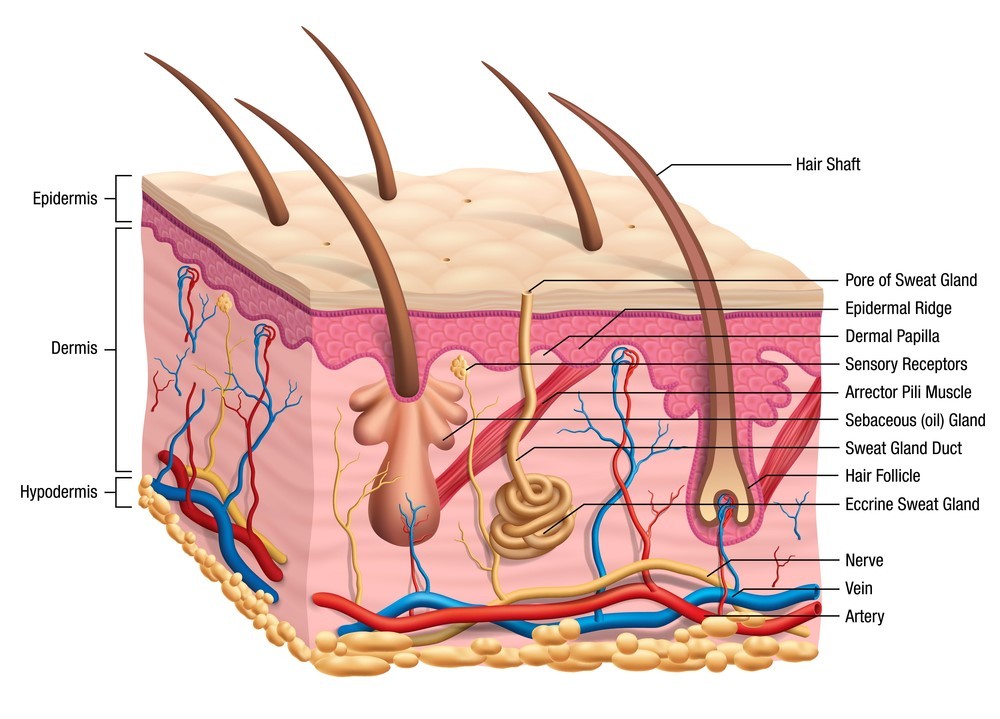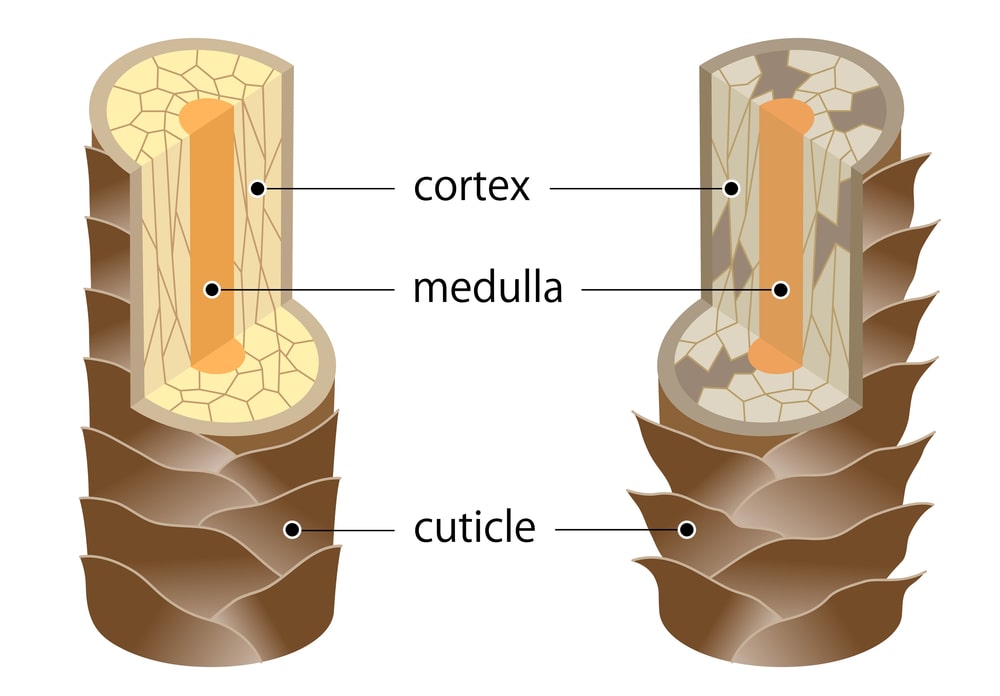Hair
- Hair is one of the characteristic features of mammals and serves as a unique mini-organ.
- In humans, hair has various functions such as protection against external factors, sebum, apocrine sweat, and thermoregulation.
- Hair also plays an important role in the individual’s social interaction.
- Nearly the whole body surface is coated with the hairs except a few areas like palms, soles, and mucosal regions of lips and external genitalia.
- Most of these are tiny, colorless vellus hairs.
- The ones located in several areas like the scalp, eyebrows, and eyelashes are thicker, longer, and pigmented and called terminal hairs.
- Humans have approximately 5 million hair follicles and 100,000 of them are located on the scalp.
Structure of Hair
- Hair consists of two distinct structures viz., hair follicle (living part located under the skin) and hair shaft (fully keratinized nonliving part above the skin surface).
- Each hair has a hair shaft and a hair root.
- The shaft is the visible part of the hair that sticks out of the skin.
- The hair root is in the skin and extends down to the deeper layers of the skin.
- It is surrounded by the hair follicle (a sheath of skin and connective tissue), which is also connected to a sebaceous gland.
- Each hair follicle is attached to a tiny muscle (arrector pili) that can make the hair stand up. Many nerves end at the hair follicle too.
- At the base of the hair, the hair root widens to a round hair bulb. The hair papilla, which supplies the hair root with blood, is found inside the bottom of the hair bulb.
- New hair cells are constantly being made in the hair bulb, close to the papilla.

Hair Shaft
The hair shaft has consisted of three layers viz.,

- Cuticle
- Cortex
- Medulla
The hair shaft is the part of the hair that we can see. Once the hair grows beyond the skin’s surface, the cells aren’t alive anymore. It’s made up of three layers of keratin, a hardening protein. Those layers are:
- The Inner Layer: This is called the medulla. Depending on the type of hair, the medulla isn’t always present.
- The Middle Layer: This is called the cortex, which makes up the majority of the hair shaft. Both the medulla and the cortex contain pigmenting cells that are responsible for giving hair color.
- The Outer Layer: This is called the cuticle, which is formed by tightly packed scales in an overlapping structure that resembles roof shingles. Many hair conditioning products are formulated to even out the cuticle by smoothing out its structure.
Hair Growth Cycle
Hair development is a continuous cyclic process and all mature follicles go through a growth cycle consisting of

- Growth (Anagen),
- Regression (Catagen),
- Rest (Telogen) And
- Shedding (Exogen) Phase.
The duration of the hair growth cycle phases changes based on the location of the hair and also personal nutritional and hormonal status and age.
Stage 1: The Anagen Phase is the growth phase of the hair. Most hair spends several years in this stage. A new hair pushes the old hair that stopped growing up and out of the follicle.
The anagen phase for eyelashes, eyebrows, and leg and arm hair is very short—about 30 to 45 days. That’s why those hairs tend to be shorter than the hairs on your head.
Stage 2: The Catagen Phase is a transitional stage lasting a few weeks, and 2% of all scalp hair is in this phase at any given time. During this time, growth slows down and the outer root sheath shrinks and attaches to the root of the hair. This becomes a club hair, which is a hair that has stopped growing.
Stage 3: The Telogen Phase is the resting phase, which lasts for about three months. It accounts for 10% to 15% of all hair. During this phase, the hair follicle is at rest and the club hair is completely formed. Pulling out a hair will reveal a dry, white material at the root.
Stage 4: The Exogen Phase is essentially an extension or a part of the telogen stage of hair growth. During the exogen phase, hair is shed from the scalp, often helped along by washing and brushing. Losing 50-100 hair per day during the exogen phase is normal.
Functions of Hair
- The hair on the head protects the scalp from ultraviolet light, cushion around the head insulates the skull.
- Eyebrows protect the eye from small foreign particles and insects.
- It diverts sweat from the eyes.
- The hair guarding the entrances to nostrils and external ear canals filters the air and helps prevent the entry of small insects and foreign particles.
- Body hair helps in evaporation of perspiration and draining of external water from the body.
- Hair is also part of the sensing function.
Make sure you also check our other amazing Article on: Oral Cavity
